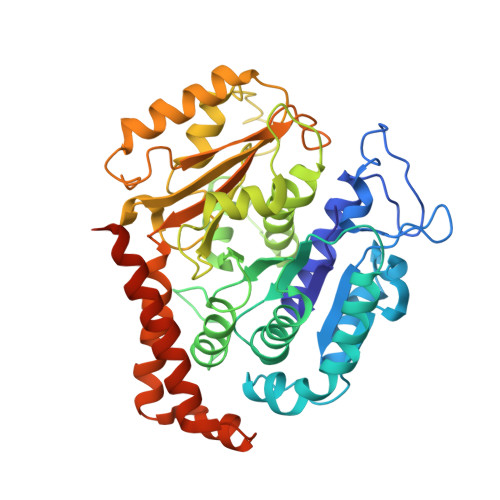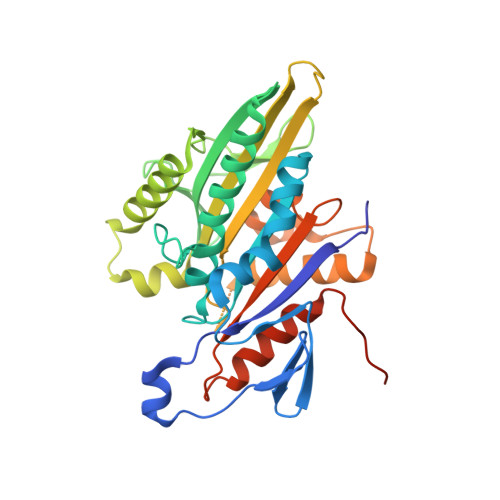Molecular Basis for Specific Regulation of Neuronal Kinesin- 3 Motors by Doublecortin Family Proteins.
Liu, J.S., Schubert, C.R., Fu, X., Fourniol, F.J., Jaiswal, J.K., Houdusse, A., Stultz, C.M., Moores, C.A., Walsh, C.A.(2012) Mol Cell 47: 707
- PubMed: 22857951
- DOI: https://doi.org/10.1016/j.molcel.2012.06.025
- Primary Citation of Related Structures:
4ATU, 4ATX - PubMed Abstract:
Doublecortin (Dcx) defines a growing family of microtubule (MT)-associated proteins (MAPs) involved in neuronal migration and process outgrowth. We show that Dcx is essential for the function of Kif1a, a kinesin-3 motor protein that traffics synaptic vesicles. Neurons lacking Dcx and/or its structurally conserved paralogue, doublecortin-like kinase 1 (Dclk1), show impaired Kif1a-mediated transport of Vamp2, a cargo of Kif1a, with decreased run length. Human disease-associated mutations in Dcx's linker sequence (e.g., W146C, K174E) alter Kif1a/Vamp2 transport by disrupting Dcx/Kif1a interactions without affecting Dcx MT binding. Dcx specifically enhances binding of the ADP-bound Kif1a motor domain to MTs. Cryo-electron microscopy and subnanometer-resolution image reconstruction reveal the kinesin-dependent conformational variability of MT-bound Dcx and suggest a model for MAP-motor crosstalk on MTs. Alteration of kinesin run length by MAPs represents a previously undiscovered mode of control of kinesin transport and provides a mechanism for regulation of MT-based transport by local signals.
Organizational Affiliation:
Center for Neuroscience Research, Children's National Medical Center, Washington, DC 20010, USA. jliu@cnmcresearch.org


















